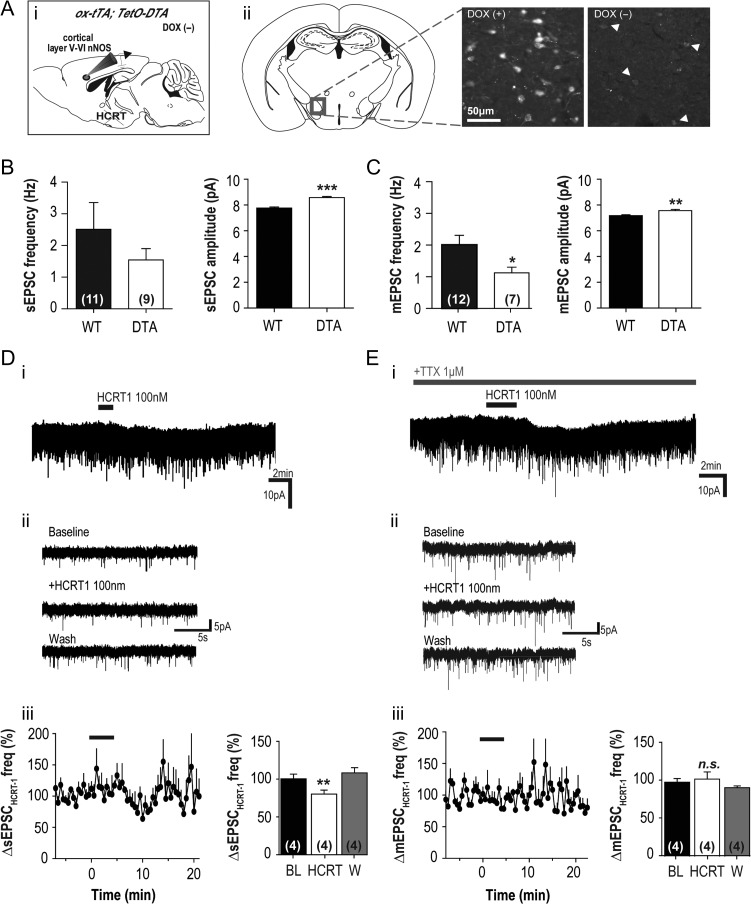Figure 6.
Response of cortical nNOS/NK1R neurons to HCRT1 application is affected in mice depleted of Hcrt neurons. (Ai) Doxycycline (DOX) was removed from the diet (DOX(−)) of Orexin-tTA;DTA (ox-tTA;DTA) adult mice to induce Hcrt neuron degeneration and then paired for breeding. The resultant Ox-tTA;DTA offspring were used at P14-21 for histology and for whole-cell patch-clamp electrophysiological recordings of cortical nNOS/NK1R neurons. (ii) Histological comparison of aged-matched DOX(+) and DOX(−) pups indicated significant degeneration of Hcrt neurons in the DOX(−) condition. (B) When basal sEPSC activity was compared between WT and DOX(−) ox-tTA;DTA pups (DTA), there was a significant increase in the amplitude of events in DTA mice compared to WT (unpaired t-test, t(398) = 6.55, P < 0.0001; n = 9 vs. 11, respectively) but no difference in the frequency of the events (unpaired t-test, t(18) = 0.97, P = 0.34). (C) In contrast, there was a significant decrease in basal mEPSC frequency when DOX(−) DTA mice were compared to WT mice (unpaired t-test, t(17) = 2.12, P = 0.04; n = 7 vs. 13, respectively) as well as an increase in mEPSC amplitude (unpaired t-test, t(398) = 3.25, P = 0.001). (D) When HCRT1 (100 nM) was bath applied to cortical nNOS/NK1R neurons of DOX(−) DTA mice, there was very little current evoked in voltage-clamp in the majority of cells (n = 2 of 7; i) and little membrane depolarization in current-clamp recordings (not shown). Examples of sEPSC activity of cortical nNOS/NK1R neurons from DOX(−) DTA mice (ii). (Diii) Bath application of HCRT1 significantly reduced sEPSC activity (~20%) onto cortical nNOS/NK1R neurons (RM-ANOVA, F(2,12) = 5.40, P = 0.020). (E) In TTX, HCRT1 evoked a significant inward current in 1 neuron (i) but did not affect the activity of mEPSC activity (ii–iii) onto cortical nNOS/NK1R cells (1-way ANOVA, P = 0.38; n = 4).

